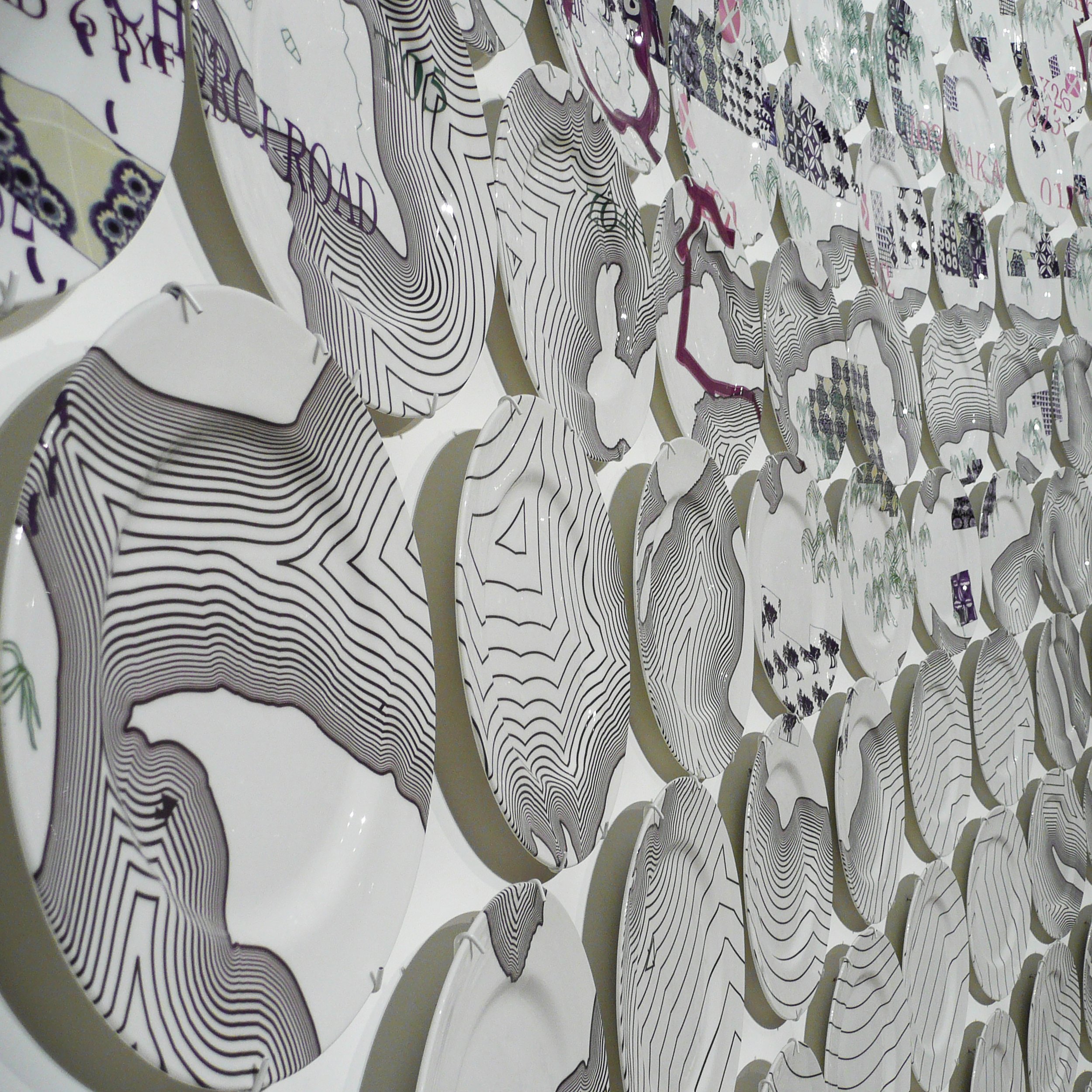Combe Down, Bath
Project: COMBE DOWN STONE MINES
Client: Bath & North East Somerset Council
Public Art Consultants: Frances Lord + Steve Geliot
Creative Research Collaborator: Dr Katie Bullen, Leader of the 3D Digital Research Cluster ‘Autonomatic’ at University College Falmouth
Specialist Manufacturer: Digital Ceramics Ltd
Specialist Consultants: Oxford Archaeology
Project Consultants: Provelio
Contractors & Mining Engineers: Hydrock + Scott Wilson
‘Combe Down is a small and very beautiful village to the south of Bath, which grew because of local stone quarrying and mining. The condition of the mine workings has deteriorated to the point where they pose a threat to life and property. To rectify this there has been a £154 million stabilisation project underway.’ Bath & North East Somerset Council
1479 Plates is a 9m x 5m public artwork by Christopher Tipping Studio commissioned by Bath and North East Somerset Council to commemorate the Combe Down Stone Mines Stabilisation Project. It takes the form of a map printed on 788 bone china dinner plates that explores the relationship between present day engineering and mining technology, stone mines heritage, natural history, and two 18th century entrepreneurs Ralph Allen and Josiah Wedgwood. The work was created in collaboration with Autonomatic, the 3D Digital Research Cluster at University College Falmouth, Oxford Archaeology, Hydrock, Scott Wilson and the Combe Down project team, and was manufactured by Digital Ceramic Systems in Stoke on Trent. 691 households affected by the stabilisation works were gifted a ceramic plate, one small part of the map, representing not only the individual household but the mining underworld beneath it.
Tipping is a public artist with a background in ceramics, who explores themes of place making in the public realm, working exclusively on site and context specific projects that enable him to re-frame historic and contemporary contextual evidence as evocative and relevant interventions.
Autonomatic are a group of practice-based researchers with their roots in craft based practices in ceramics, glass, metals amongst other media. They employ an open and experimental approach to the use of digital production technologies within creative practice While they are deeply involved in the digital world, they are firmly committed to the value of material knowledge and the integration of digital tools with traditional practices. They work pro-actively against the generic qualities of digital tools to create innovative processes and unique objects.
Tipping’s map concept was based on the layering of digital data from geological surveys and ordinance survey, with hand drawn elements derived from archaeological finds and the cultural influence of mining in the Combe Down village. The digital design process involved testing and developing methods for achieving a rich and coherent visual language for the map, as well as the technical demands of working on a vast scale, creating individual high-resolution files for high quality ceramic print output, and developing the hanging strategy for the exhibition.








